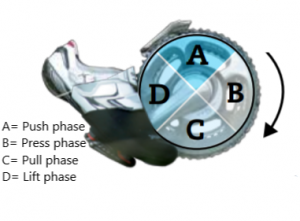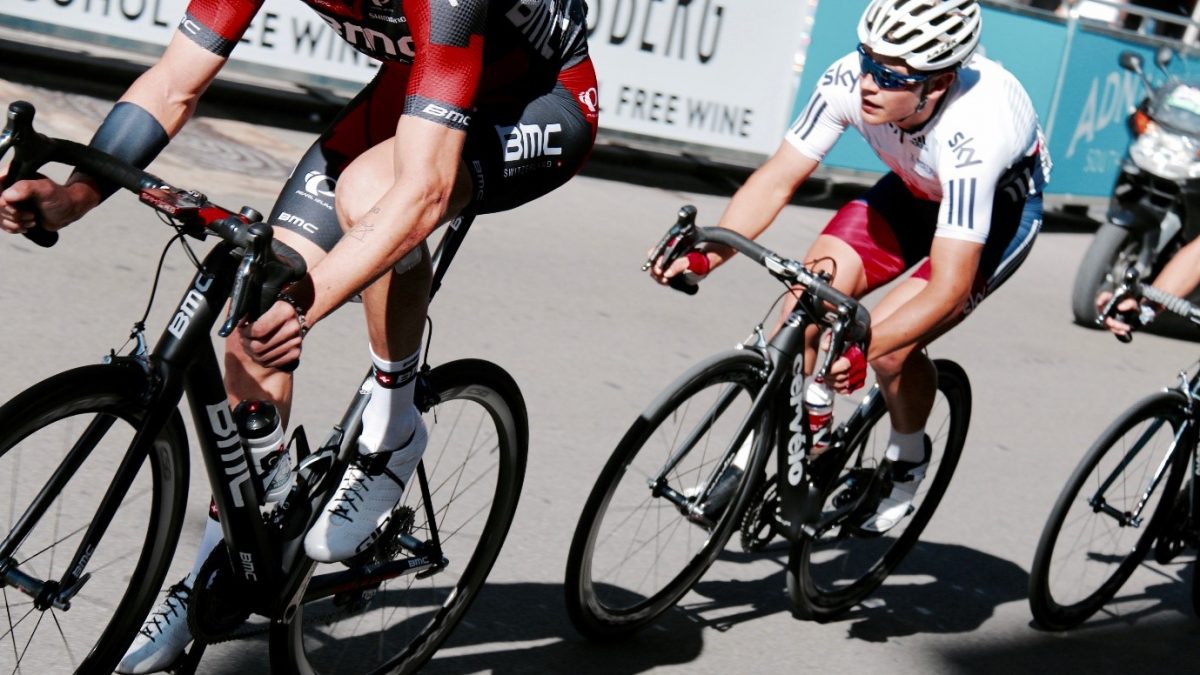Cycling is probably one of the most underestimated sports. A good cyclist with an economical pedaling motion is not a given, but the result of years of training. Even amateur cyclists should be aware of this fact. Here are 10 tips for better cycling.
Can you ride a bike? Yes, you will say, slightly astonished but determined. But is that really true? Can you sprint, hands free up a slight incline, pedal a round cadence with one leg, or maintain a frequency of 130 revolutions for a minute without bouncing up and down on the saddle like a yoyo?
Because here’s the thing: Cycling can actually be done by (almost) anyone, but well-rounded cycling has to be learned just like any other sport. Riding a bike really fast takes patience and time. And versatile training. It takes a good ten years for a road cyclist to reach his peak performance. It’s not for nothing that most successful professional cyclists are not 19 or 20 years old, but around 30. But hobby cyclists also benefit from not always doing their training laps in the same routine, but instead deliberately incorporating technical exercises or variations in speed into their rides from time to time. 10 tips on how to become a better cyclist.
1 – Basic training
In cycling a solid foundation is the basis on which everything else can be built. That’s why it’s crucial to deliberately do low-intensity, somewhat longer workouts (60-120 minutes) in preparation for the season, in which the fat metabolism is trained. Basic training means: The pulse never exceeds a certain level in such a workout. The ideal level is around 60-70% of the maximum pulse. If your maximum heart rate is 180 beats per minute, you should not exceed a heart rate of 126 in basic mode. Consistent low-intensity training is also the key to success for ambitious riders. The more you can develop your fat metabolism, the longer you can use glycogen reserves as the intensity increases before you run out. Important: Stay within the defined pulse range during such training sessions, even if you are constantly being overtaken. Therefore, train basic workouts alone if possible, so that no other pace is forced on you.
2 – High cadence
Can you manage to pedal at 130 pedal revolutions without bouncing up and down on the saddle? High cadence improves intramuscular coordination and needs to be practiced. The old school of cycling required young people to ride fixed-gear in winter training. This is because without freewheeling, you always have to pedal. You also only have one gear available – an excellent souplesse workout, but one that requires some practice. In cycling clubs, it is still common today to have specific training sessions in which you ride exclusively at a high cadence (and correspondingly small gears). Or training sessions with short sections at maximum high cadence (as fast as possible). Olympic track medalist Franco Marvulli was usually on the track with about 125 revolutions, on the roller he even managed cadences well above 200/min. The record of the Swiss Manfred Nüscheler is 275 revolutions per minute (on the ergometer). Important: Get used to high cadences continuously and pay attention to an active pull phase when pulling up the pedal despite (or even because of) the high frequency.
3 – Low cadence
After a few weeks of predominantly basic training, low “cadences” also have their appeal, because they promote strength endurance. Every now and then during a training session, try to constantly ride up longer, moderate inclines with large gears and a frequency of around 60 to a maximum of 70 revolutions per minute. Stay consistently in the saddle while doing so. With longer uphill rides in the saddle, you train circular pedaling with holistic use of power, without using their arms. The low cadence allows you to concentrate on an economical pedaling motion.
4 – Vary cadence
Also try to play with the cadence, sometimes deliberately riding very high cadences, but then again very low ones. Or ride frequency pyramids and increase your cadence by 10 revolutions per minute every minute. Another exercise is to maintain a self-selected cadence over a longer section. To do this, you either need to change gears frequently – and with forethought – or increase your effort, depending on the terrain. But what cadence is actually ideal? The “perfect” cadence depends on various factors and cannot be defined with a fixed number. A triathlete rides at a different (lower) cadence than a track rider. In general, however, high frequencies (around 95-110 rpm) are more economical than low frequencies with large gears. Fabian Cancellara, for example, rides with a cadence around 90-95 even on the mountain. At high cadences around 100-110, the power-distance ratio is best. If you crank faster, you put less strain on your muscles and joints. By the way: Downhill, the pedaling motion should never be completely stopped, otherwise the muscles will “close up” at the beginning of the coming uphill and the legs will get heavy.
5 – Coordination
“Feel” your pedaling motion. Imagine a pedal rotation as a circle and try to turn the pedal in the largest possible circle with your feet. Always with constant pull/pressure – no gaps. Push, press, pull, lift. Concentrate on the four phases during a pedaling cycle (push, press, pull and lift phase, see graphic) or sometimes specifically on just one.

What happens in the front when you focus on pulling up in the back? Another coordination exercise is to ride hands free on a longer, open, straight and slightly uphill stretch (hands clasped behind the back, for example, or stretched up into the air). This challenges the legs coordinatively and automatically forces them to perform a round and steady pedal. Riding in an upright position works the rear leg muscles more, while riding hands-free with the upper body bent and tilted forward works the front thigh muscles more. Single-legged riding also promotes a continuously active pedaling cycle. The greater a rider’s range of motion and the more motor units involved in the pedaling cycle, the longer fatigue can be postponed.
6 – Sprints
If you are in endurance mode all the time, you will lose your speed. Vary the pace and set yourself visual targets (e.g. tree, board, house, etc.) in training, up to which you accelerate as quickly as possible and keep the pace at a maximum. The length of the sprints is only a few hundred meters or around 20-30 seconds. Sprinting promotes speed and the ability to maximally apply one’s strength.
7 – High intensities
Intermittent high intensities promote the ability to better endure an oxygen debt. Interval training in various variations is ideal for this. An example: 4 min. maximum load – 3 min. active recovery; 4 repetitions. During such intervals, the pulse rate can go up to 90-95% of the maximum heart rate in the meantime, i.e. it is above the anaerobic threshold. With the interval duration, the pause lengths or also the pulse values the load can be varied. You can also pick a stronger group sometimes so that you are forced to go out of your comfort zone. But remember that intense sessions require a longer recovery and only bring the desired success when alternated with basic training (see point 1 Basic training).
8 – Get out of the saddle
Just as you should now and then master an incline completely sitting, you can also ride up a longer, somewhat steeper incline exclusively standing in the saddle. This puts additional strain on the shoulder and chest muscles and uses the leg muscles differently than riding while seated. Alternating between sitting and standing pedaling adds variety to your hill training.
9 – Watt control
Many riders control their workload not by heart rate, but by wattage. Triathletes in particular trust the wattage at least as much as their instincts when it comes to long distances in order to ride at the right intensity and not overdo it. Like heart rate, wattage can serve as a guide for different intensities. The only caveat is that this requires a relatively expensive power meter.
10 – Shift smoothly
If you have to shift down three gears at once on an incline, you’re either starving – or shifting incorrectly. Try riding with foresight and always shift early so that you are in the perfect gear in every situation. To do this, choose a varied route with lots of curves and constant ups and downs. Always try to stay smooth and take the speed out of the curves in the appropriate gear. This saves energy and the speed remains high. You also need to learn how to change gears while pedaling in the saddle, because you need to find the right moment to shift smoothly.
Text from FITforLIFE– This blog post was provided to us by the Swiss magazine FIT for LIFE. If you want to read regularly informative knowledge articles in the field of running and endurance sports, click here.

You might also be interested in automatic cycling power zones. or our article on smooth pedaling.
